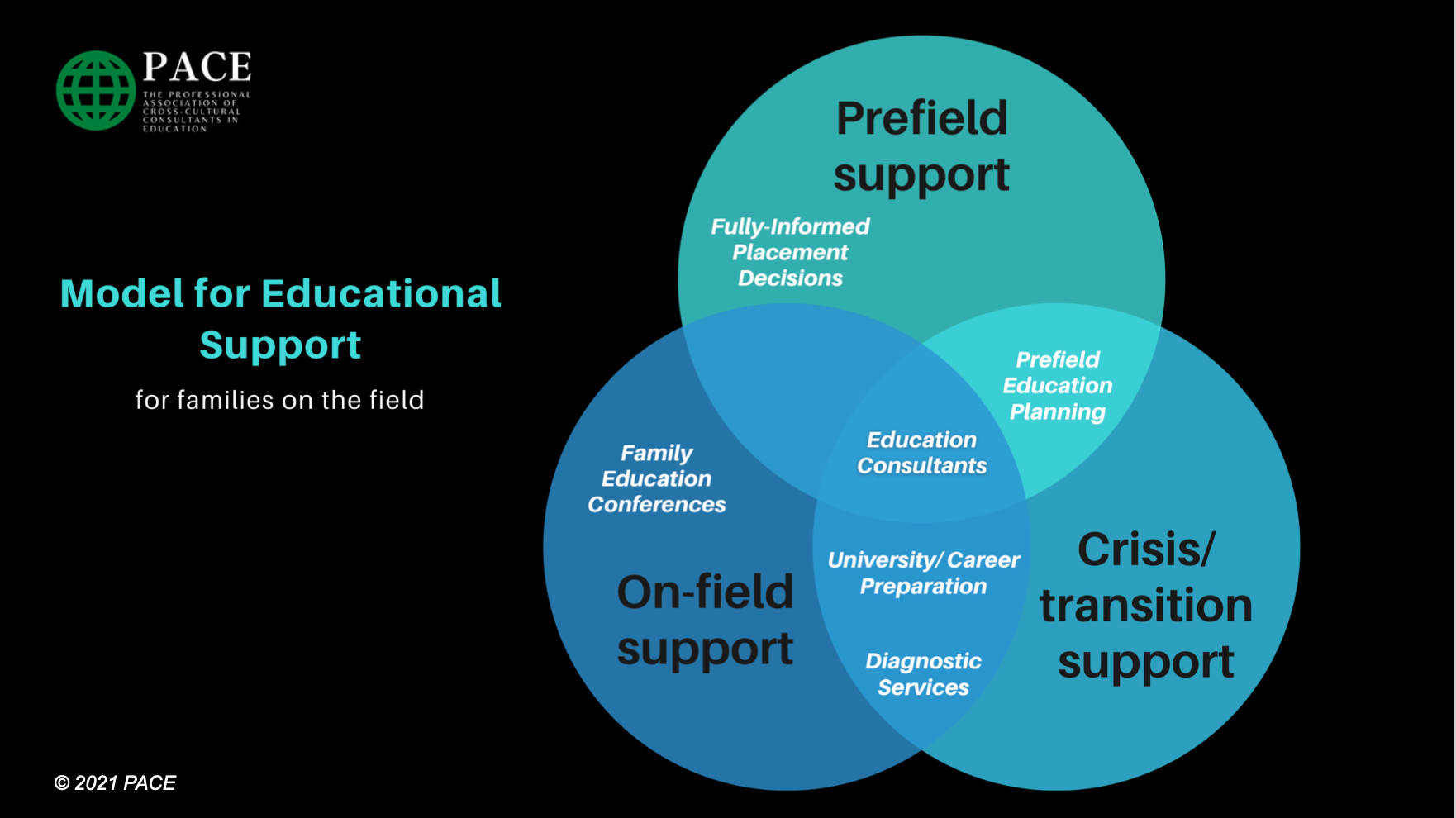In March, many education consultants gathered in person at the MK Education Summit near Atlanta…

MKs and Second Language Acquisition
This is a classic article about TCKs and multilingualism first published in Fitted Pieces by SHARE Education Services. The author is Cynthia Storrs, who served in Europe and was a staff member of SHARE for many years.
Few workers forget the day they arrived on the field. It generally ranks right up there with The First Kiss, The Day Kennedy Was Shot, or The Truth About Santa, in terms of recall power. Equally accessible in the memory bank often is: The First Day of Language Study. Regardless of all that agencies do to prepare a fledgling worker (and many do an commendable job at pre-field preparation), the first encounter with a new language often arrives like a rabbit punch, or a bucket of cold water, even when one has been forewarned and forearmed.
Meanwhile, observe the kids, our MK’s. Having had little or often no preparation, many sail blithely off into preschool, and after some initial noticeable discomfort, appear to acquire the foreign language as if by osmosis. No problem! — or so it seems.
Sometimes there are no problems; sometimes problems surface later. And sometimes, the scope of these problems is such that the family decides they can no longer stay on the field, resulting in a rupture in the work and uprooting of relationships, both often accompanied by overwhelming feelings of frustration, guilt and blame. What is particularly unfortunate is that some of the problems might have been avoided, had attention been paid to certain details from the start.
As someone working in MK education, I am totally committed to second language acquisition and cultural adaptation for the entire family, on all levels. Successful linguistic and cultural adaptation can have a significant influence not only on the quality of ministry, but also on the quality of life overseas. Having worked in a foreign language-church plant project, reared and educated two small children overseas in a foreign language, I am also aware of the demands language and cultural acquisition make on parents and on the MK’s. The purpose of this article is to address a number of the issues involved in MK language and cultural adaptation, and make suggestions to facilitate the process. I believe wholeheartedly that MK bilingualism/biculturalism is not only a worthy goal, but one with benefits that will ultimately outweigh a monolingual education. But it is also a process which must be undertaken with parental and community support. This article will explore these issues as well, in the hope of avoiding or minimizing some of the challenges traditionally associated with MK second language/culture acquisition.
One of the first questions raised concerning MK language learning is methodology: what is the best way for MK’s to learn a foreign language? Part of the answer to this question is answered in two other questions: what is the child learning the language for? How old is the child? If the child is to learn the language for only conversational purposes, his training is much less complicated, and simple exposure and interaction in a social situation may suffice. If the child is learning the language and will be expected to perform on an academic level with his peers, the demands are much greater, and his training must reflect this. (Academic demands will be addressed further later in this article.)
The age of the MK should also be taken into consideration. Happily, age is rarely a barrier to language learning (unless we are beginning at an age when our faculties such as hearing, eyesight and memory are beginning to fail us). One often hears that after a certain age, we cannot learn a foreign language. This is simply not true. There is much research to indicate that after a certain age (around 10-12), the chances of achieving a native accent are diminished, but learning a language involves more than just learning an accent. There are advantages and challenges present for language learners at each stage of life.
As to specific methodology, there are many schools of thought on this subject, and seemingly little agreement. A few general principles are probably more helpful than a notion of which language school to subscribe to. There is much research which indicates that learning a second language has many similarities with learning our first, or, our mother tongue. It is believed that the acquisition of our first language is guided by innate language ability, a sort of “mind-map,” which facilitates language learning. There are a number of principles we can infer from this; one is that the acquisition of our first language will transfer to and help in the acquisition of a second one. Therefore, it is imperative that parents of MK’s not neglect their mother tongue.
Families often debate whether the second language (L2) should be used in the home. Certainly, the L2 should be used when other L2 speakers are present, out of respect for one’s guests, but otherwise, families should be encouraged to do all they can to foster the native language, for two reasons: first, a child’s L2 ability will rarely exceed his L1 ability; and secondly, the home environment may be the only source of input for the mother tongue a MK has, particularly if s/he attends a national school. The parents will be the only source vocabulary and expression, at least until a child reads, which should also be actively encouraged and modeled by the MK parents. A strong mother tongue base will help in L2 acquisition.
Another question often raised about L2 methodology concerns informal vs. formal acquisition. Practically speaking, is it of more value to memorize verbs or to let your child pass the morning wandering in the market? If he has to pass a test on the verb table, obviously he has to memorize it. But for general acquisition, both children and adults may learn more and learn it faster chatting their way through a market place, because the latter situation will involve them in a task that is both useful and low-stress (or, causing less stress than a formalized test!) Another axiom is to learn a little, but use it a lot (Larson, 1996). This is what happens when we put young children in an L2 nursery school, where they cannot say much, but they say it often! But the same effect can be realized for older children through sports or music. MK’s (and their parents) need to have social times, informal language experiences, with little pressure put upon them, to test out the knowledge they have learned in more formal environments. Formalized schooling often imparts much knowledge, with little opportunity to use it.
Regardless of the specific methodology chosen, a critical factor in L2 acquisition (some would say THE critical factor) is attitude. For an MK, this involves not only his/her personal attitude, but the attitude of his parents, and the attitude of the L2 speakers around him. I recall sympathizing with my children about their verb tables and (wrongly) agreeing with a comment something like: “Yes, I hate these stupid verb conjugations, too . . .” But the problem here is: these verb tables are part of the sum total which make up the people who use them, and if I think their language is impossible and not worthy of my effort, I am subtlety communicating the same thing about the people who use these verbs. What I am also communicating is that my desire to identify with these speakers is very low, and that my attitude towards them is basically negative, which results in poor L2 acquisition.
Equally important is the attitude of the L2 speakers towards the MK. A language learner must have a desire to accept, identify with, and imitate the L2 speakers and their language, but for successful acculturation to occur, the L2 speakers must have an equal desire to accept the L2 learner. Otherwise, for example, social situations, desirable for informal language practice, will not occur. It is important that the family do everything possible to make friends with L2 speakers, and encourage L2 friendships for their children. Whole-class birthday parties, at the elementary level, are a great way to develop social networks. At the teen level, offering your home for a hamburger BBQ or coaching a baseball team would be conducive to informal language practice and developing relationships.
It is also advisable to try to help a child “fit in” in a tangible way, with similar clothing, school items, etc. to de-emphasize cultural differences. The less an MK is regarded as an outsider, the more likely s/he is to be taken into the L2 “inner circle.” On the other hand, parents of MK’s should resist the notion of “going native,” by denying or ignoring a child’s linguistic and cultural heritage. “Going native” may result in the MK facing a loss of identity (something most language learners experience naturally to a certain extent). If excessive, a loss of identity will result in feelings of anger and resentment towards the target culture. If children perceive the L2 and its culture as a threat to their cultural identity, they will reject the second culture in an effort to preserve their identity. As language is the salient manifestation of that culture, this rejection will probably result in poor L2 learning.
Next week in Part 2: bilingualism, academic versus social language and more!
© 2012-2023 PACE
All rights reserved


